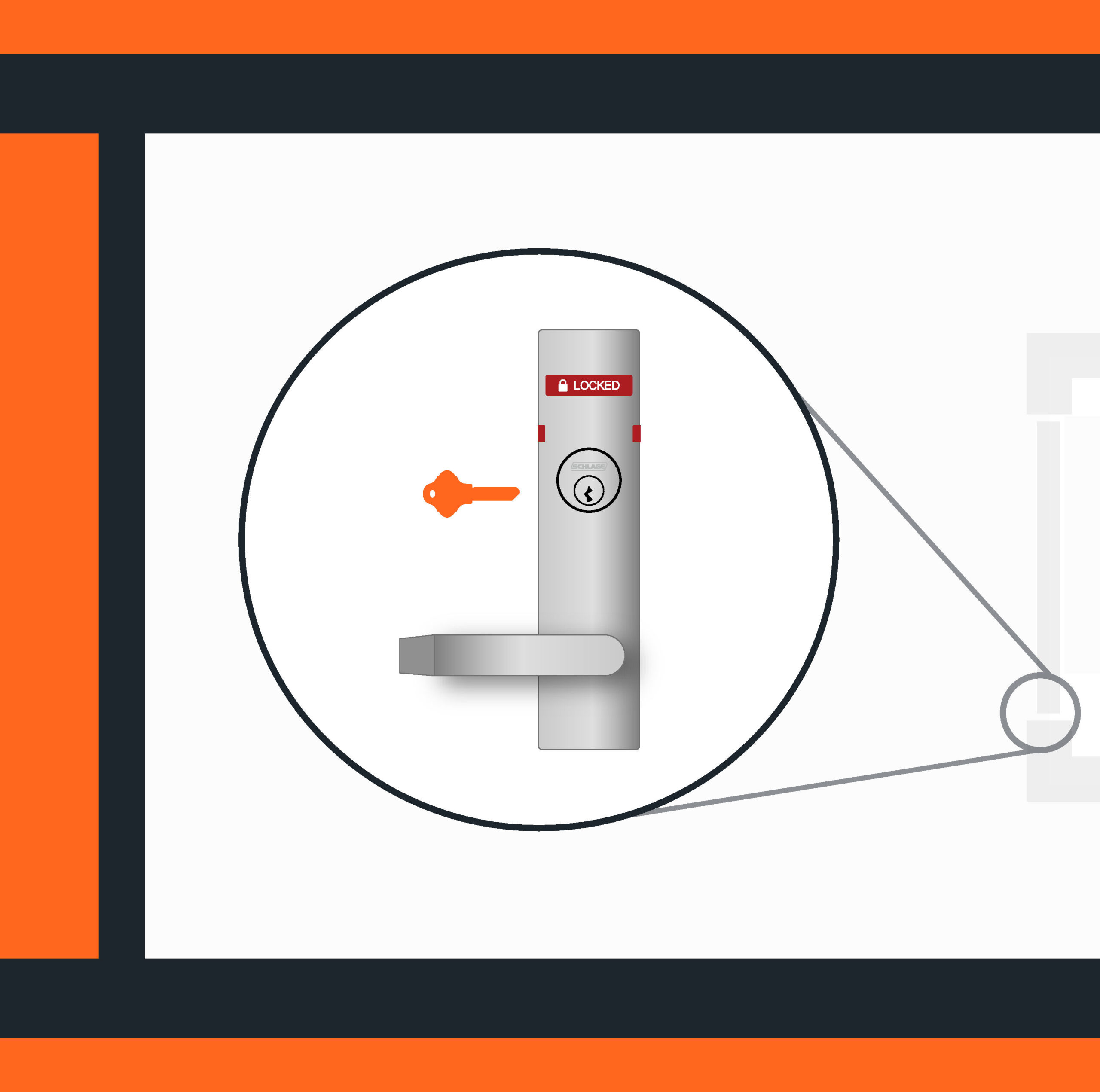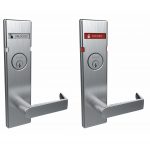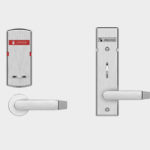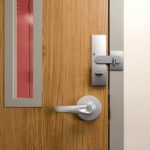Last night I was having dinner with some friends, and I spent a lot of time talking to a high school math teacher who works in an alternative middle school/high school. If kids get into trouble at the school they are attending, they may be assigned to my friend’s school for a period of time (6 weeks or more) before they can go back to their school. It was really interesting to hear about some of the security measures in place, which included metal detectors, bag searches, rules about only allowing packaged foods and unopened drinks to be brought for lunch, and locked doors.
This school has electronic access control on the exterior doors, and the classroom doors are lockable with a key. In this case, the keys are needed to ensure that only an authorized person can lock the door, and staff members always have keys on hand to enter a classroom quickly. In some schools, the priority is for anyone to be able to lock the door at any time, so a push button or thumbturn lock is used instead of a lock operated only by a key. There isn’t one lock function that works for every school.
I’m curious about what you are currently seeing as the preferred lock function(s) for classroom doors. WWYD?
Allegion has updated the infographic below, to help educate school administrators and staff on the available options for classroom door locks. A PDF of the infographic can be downloaded here.
You need to login or register to bookmark/favorite this content.











In the public school jurisdiction that I am in, we use a key on the interior to lock the doors. We’ve taken things so far as to have a single system-wide master key to allow this locking. The key bow has been powder coated black, to match the color of the interior FSIC core, to help identify things even further. On mortise locksets we are using the locked/unlocked window escutcheon; while on cylindrical locksets, we are using the lesser identifiable “locked” rose.
We chose this route because we did not want unauthorized locking of classroom doors. The system-wide master key and color coding allows us to issue keys to all staff, including substitutes. Since subs (and many teachers) travel between schools, their having the one black key, they know they can always secure their classroom regardless of where they are.
Like you said one solution does not work for all. Some jurisdictions use Store Room function locks and a magnet that is slide in to prevent the door from latching. I personally dislike this as a solution, since it presents code issues when the doors are required by code to latch for smoke or fire purposes….
Thanks for sharing your insight, Darrell!
– Lori
That’s a really good strategy. I have always thought storeroom or office functions would be good but I never thought of keying the inside cylinder to a common keyset that only locks the door but cannot unlock the door from the outside. My compliments to your team or whoever came up with that one.
– DJB
I see school systems grappling with this topic and how over time how each county handles classroom doors evolves. In one county I see the use of office function locks and all classroom doors keyed alike allowing teachers to shift from room to room as needed. In another county the use of storeroom function with a wall mounted hold open device for in between class times. When class begins the instructor closes the door securing the room.
Hi Tony –
Do the doors with hold-opens also have closers?
– Lori
At our school district we have started to replace all new locks with a storeroom function. we issue all staff with the appropriate keys and we expect them to carry them at all times. This lock function allows unaccompanied students to lockdown in a emergency. we compartmentalize our keying and key all classrooms alike so any teacher or substitute teacher can access any classroom at any time. this lowers the number of keys needed for each staff. we have also started implementing a door policy that eliminates all door stops and hold opens, especially on the exterior doors.
We had a big problem with teachers not having their keys on them throughout the building. Having doors that are always locked are a big inconvenience for teachers and staff, now they have to carry their keys.
Hi Brian –
Thanks for sharing the situation in your district!
– Lori
I work for the state university so we have an advantage that our students are older and paying to attend classes (so in theory not trying to lock out instructors) so we have been moving to a push and turn locking function on all of our cylindrical locks, and are starting to install thumb turns on keyed dogging or center case unlocking for labs with exit hardware. This allows any student, staff, faculty or member of the public using a space to secure from within if the need arrives. It also makes it easier for anyone to lock a space up in the evening if they find it unlocked.
Hi Carl –
I’ve seen that at some other universities as well. Thanks for sharing your insight!
– Lori